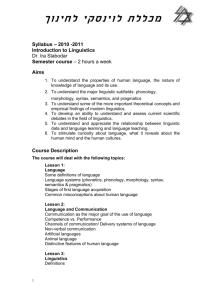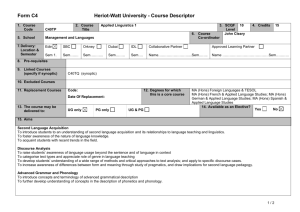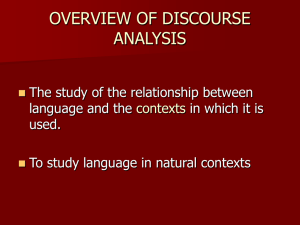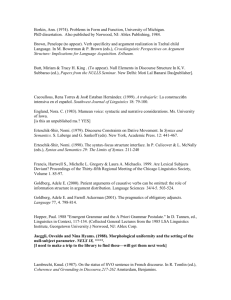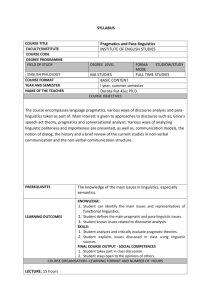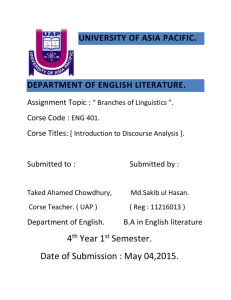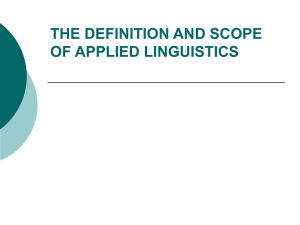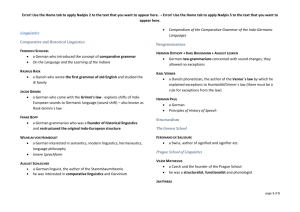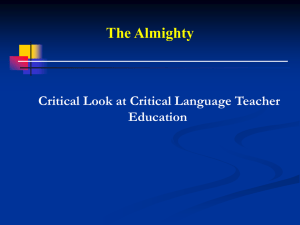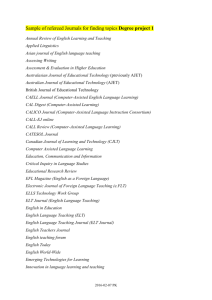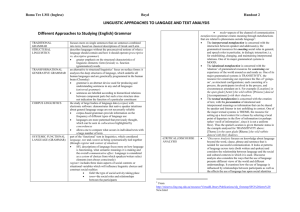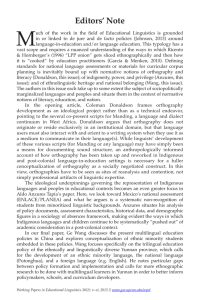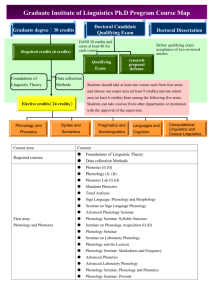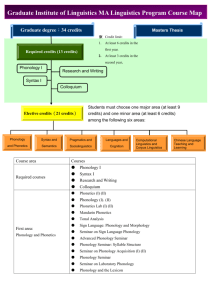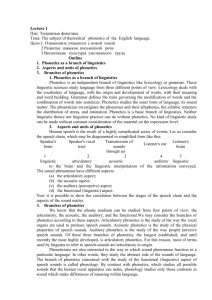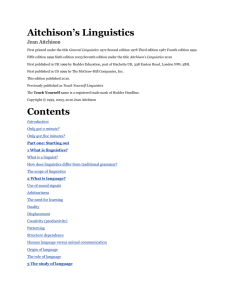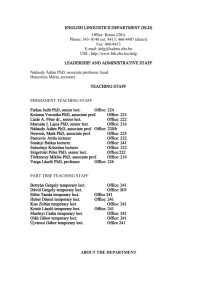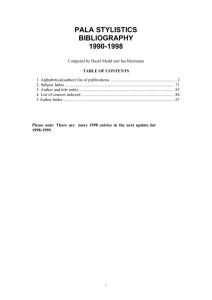Units of language and branches of linguistics
advertisement
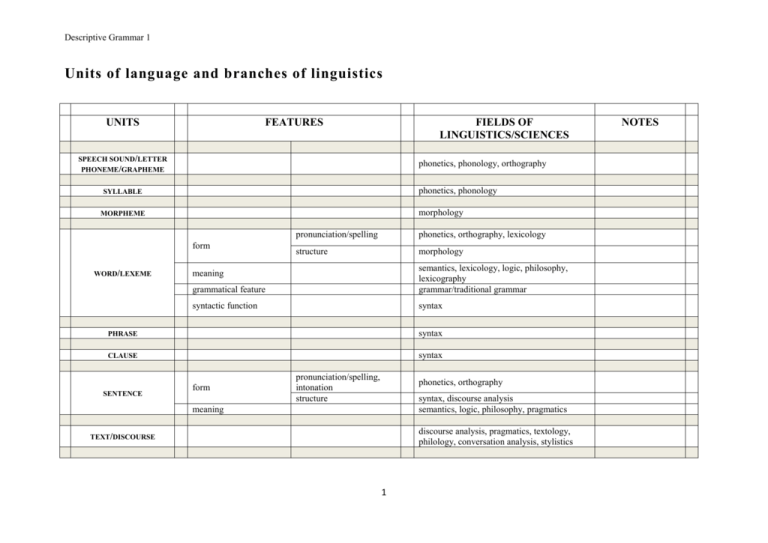
Descriptive Grammar 1 Units of language and branches of linguistics UNITS FEATURES FIELDS OF LINGUISTICS/SCIENCES SPEECH SOUND/LETTER PHONEME/GRAPHEME phonetics, phonology, orthography phonetics, phonology SYLLABLE morphology MORPHEME form WORD/LEXEME pronunciation/spelling phonetics, orthography, lexicology structure morphology grammatical feature semantics, lexicology, logic, philosophy, lexicography grammar/traditional grammar syntactic function syntax meaning PHRASE syntax CLAUSE syntax SENTENCE form pronunciation/spelling, intonation structure phonetics, orthography syntax, discourse analysis semantics, logic, philosophy, pragmatics meaning discourse analysis, pragmatics, textology, philology, conversation analysis, stylistics TEXT/DISCOURSE 1 NOTES Descriptive Grammar 1 Anthropological or ethno-linguistics and sociolinguistics focus on language as part of culture and society, including social class, ethnicity and gender. Applied linguistics is interested in language planning, literacy, bilingualism and second language acquisition. It also covers such areas as discourse analysis, language assessment, language pedagogy. Computational linguistics is concerned with the computer applications of natural languages. Conversation analysis investigates the regularities of a fluent conversation. Descriptive grammar provides analyses of the grammars of different languages. Dialectology investigates how geographical, historical and social factors fragment one language into many. Discourse analysis cover term for various analyses of discourse/text with a particular interest in wellformedness (coherence, cohesion). Historical linguistics is concerned with a theory of language change – why and how languages develop. [Do they develop?] Lexicography is a branch of linguistics which deals with the questions of what is compiled and how a compilation is arranged in a dictionary. Lexicology is the study of the vocabulary of a language. Mathematical linguistics studies the formal and mathematical properties of language. Morphology corresponds to the study of forms, i.e. the subdisciplines of inflection as well as of the study of word classes and their classificational criteria. Neurolinguistics is concerned with the biological basis of language acquisition and development and the brain/mind/language interface. Orthography is the study and/or instruction of systematic and uniform transcription with letters and punctuation. Philology is the study of written records the establishment of their authenticity and their original form, and the determination of their meaning. Philosophy of language is concerned with questions on the origin, characteristics, way of functioning and achievement of language. 2 Descriptive Grammar 1 Phonetics focuses on the physical aspects of articulation. Phonology investigates the system of speech sounds of a language. Pragmatics studies language in context and the influence of situation on meanings of utterences. Psycholinguistics is the branch of study of language concerned with linguistic performance – the production and comprehension of speech. Semantics is interested in the meaning of words and linguistic expressions. Stylistics the study of the style (correct and/or effective use of constituents) of a text. Syntax is the study of sentences. Textology supplies an explanation for the constitutive properties of texts. Source Bussmann, Hadumod. Routledge dictionary of language and linguistics. Translated and edited by Gregory Trauth and Kerstin Kazzazi. London ; New York : Routledge, 1998. xxx, 1304 p. ISBN 0-415-20319-8 Fromkin, Victoria A. (ed.). Linguistics : an introduction to linguistic theory. Reprinted. Malden (MA) ; Oxford (UK) ; Melbourne (Australia) ; Kurfürstendamm (Germany) : Blackwell, 2003, ©2000. xi, 747 p. ISBN 0-631-19711-7 3
